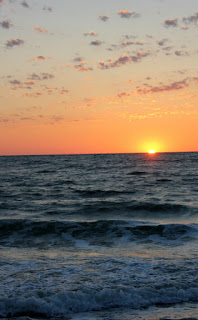Both of us love to travel—to see how other people live, to
infuse our creative banks with new sights, sounds, tastes, and smells, and for
the change of pace escaping our normal routine brings. I think it’s also fun traveling with different people. I’ve taken trips with my husband, my friend Laure, and
now with Kerri, and each trip has a different feel and focus. It’s fascinating to see
how other people travel: what they enjoy doing, how they see things. (This trip
was especially good for that, as Kerri is an accomplished photographer and she
saw much I wouldn’t have noticed.) Also, as we caught up on each other’s lives,
I learned how I really felt about certain things as I heard myself talk.
There’s something about formulating thoughts and exposing them to a “safe”
person that clarifies things for me.
But that’s enough of why we travel—onward to what we
actually saw. I’ll break the trip into a series of posts, since it would be
unbearably long if I tried to cram it all into one. And before you ask, I
didn’t make one sketch—I simply didn’t have enough time in any one place, and I
was too tired at night. I took many photos (so many my camera battery died on
the last day), and my plan is to make at least one sketch from them.
Our first stop was the J.N. “Ding” Darling National Wildlife Refuge on Sanibel Island, 6,400 acres of mangrove forest, seagrass beds,
marshes, and hardwood hammocks. The refuge provides habitat for more than 245
species of birds. We took the four-mile wildlife drive (you can also bike or
take a tram), but we could have walked the four miles quicker. We kept stopping
to jump out to look for wildlife—we saw white pelicans, little blue herons,
ibis, gulls, sandpipers—and our first alligator. (There will be plenty more gators when we arrive in the
Everglades—stay tuned!)
 |
| Little blue heron |
 |
| Gator number one |
This photo, taken by Kerri, pretty much sums up what we did:
 |
| Look up, look down, look all around... |
We ended the day on Captiva Island, drinking wine and watching the sunset. (Special thanks to our friend Mary, pictured with me above, who not only chauffeured us around Sanibel and Captiva, but also invited us to stay overnight in her beautiful home.)
Next up: the Everglades—gators, and cormorants, and purple gallinules, oh my!













































.jpg)


